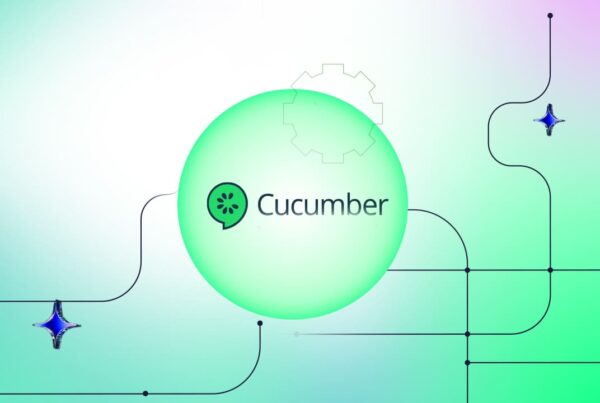QA in Agile Methodology: Best Practices & Implementation for 2026

As software development moves at a rapid pace, high-quality deliverables are essential. In Agile methodology, QA is important, so it does not conflict with quality like fast and computerized Agile. Agile QA ensures that testing isn’t just tacked on after the fact like in traditional waterfall approaches — tests and quality assurance remain an integral part of the entire process.
With a QA embedded in Agile software test automation, teams can catch bugs earlier, enhance teamwork, and align more closely with business needs. This guide covers QA in Agile methodology, Strategies, best practices & challenges, and solutions to implement a QA process effectively.
What is Agile QA Testing?
Agile QA testing follows key principles to ensure continuous quality during software development. The Agile approach to quality assurance differs from traditional models in the following ways:
Key Principles:
- Testing Early and Often: Testing begins on day one and happens in increments throughout development.
- Frequent Feedback Loops: The product is refined in independent iterations per the business’s changing requirements.
- Cross-Functional Collaboration: QA engineers address potential issues with developers and stakeholders early on.
- Shift-Left Testing: We turn testing earlier in the development cycle to catch defects before they escalate.
Best Practices for Agile QA
To ensure efficiency in QA in agile methodology, teams should implement the following best practices:
1. Early Involvement of QA Teams
Quality assurance professionals should be engaged from the project’s inception. Their role extends beyond testing—they participate in requirement gathering, risk assessment, and defining acceptance criteria. This proactive involvement ensures a clear QA process, reducing costly errors down the line.
2. Test Automation for Faster Cycles
Agile relies on continuous integration (CI) and frequent releases. Automating repetitive test cases can accelerate deployment and enhance accuracy.
Automation should cover:
- Regression testing
- Unit testing
- API testing
- Performance and load testing
Tools such as Selenium, TestRail, and ACCELQ can support automation in Agile testing by reducing manual efforts.
3. Shift-Left Testing
A key principle of Agile QA is to identify defects early. Shift-left testing emphasizes:
- Writing and executing test cases as soon as user stories are developed.
- Implementing unit testing at the developer level.
- Conducting static code analysis and exploratory testing early in sprints.
By catching defects sooner, teams can avoid delays and unexpected failures in later stages.
4. Agile Test Planning & Execution
Agile testing strategies must be nimble and agile. Key elements include:
- Developing lightweight test plans that adapt to the project.
- Risk and business value-based test case prioritizing.
- Behavior-driven development (BDD) frameworks like Cucumber aid collaboration.
The goal is to make testing an iterative, collaborative effort, not just a phase.
5. Balanced Use of Manual and Automated Testing
Automation alone can be deployed at scale with speed and accuracy, but still in some contexts, such as:
- Exploratory testing
- Usability testing
- Ad hoc and edge case testing
Balancing manual and automated testing ensures comprehensive coverage in Agile software testing.
How to Implement QA In Agile Methodology?
Creating a strong QA framework in an Agile implies an effective approach. The following are ways organizations can ensure successful QA integration within Agile workflows:
1. Establish a Flexible QA Strategy
Agile projects evolve rapidly, requiring adaptable QA strategies. Teams should:
- Define clear quality objectives.
- Establish a test-driven development (TDD) approach.
- Align test efforts with sprint goals.
2. Maintain Test Environments Effectively
A stable and consistent test environment helps identify defects before production. Best practices include:
- A stable and consistent test environment helps identify defects before production. Best practices include:
- Using containerization (Docker, Kubernetes) to keep development and production in sync
- CI/CD Pipelines for Continuous Testing and Deployment.
3. Leverage Continuous Integration & Deployment (CI/CD)
CI/CD pipelines bring automation to build, testing, and deployment processes to keep the software in a deployable state always. Integrating QA within CI/CD helps:
- Detect integration issues early.
- Maintain rapid feedback loops.
- Ensure regression testing is automated with every code commit.
4. Use Agile Metrics to Track Quality
Measuring quality effectively in Agile requires tracking key metrics:
- Defect Density: Number of defects per module or function.
- Test Execution Rate: Percentage of tests executed per sprint.
- Code Coverage: Percentage of code covered by automated tests.
- Mean Time to Detect (MTTD) & Mean Time to Repair (MTTR): Measuring defect discovery and resolution times.
Challenges and Solutions in Agile QA
1. Time Constraints
Agile sprints are short, leaving limited time for exhaustive testing.
Solution: Prioritize test cases based on risk and business impact. Automate high-priority test scenarios to optimize test cycles.
2. Frequent Changes & Evolving Requirements
Constant requirement changes can disrupt test planning.
Solution: Adopt exploratory testing, ensure test cases are modular, and use behavior-driven development (BDD) to maintain alignment.
3. Lack of Dedicated QA Teams
Some Agile teams lack a formal QA team, expecting developers to test.
Solution: Promote a quality-first mindset, implement peer testing, and invest in Agile testing frameworks such as ACCELQ.
Role of a QA Engineer in Agile
QA engineers are integral to Agile development quality assurance. Their responsibilities include:
- Requirement Analysis: Ensuring test scenarios cover evolving user needs.
- Test Planning & Execution: Developing adaptive test strategies.
- Defect Logging & Verification: Switching discrepancies, recording them, and guaranteeing adequate resolutions.
- Continuous Collaboration: Collaboration with developers and business analysts.
QA engineers ensure product quality by engaging in every Agile ceremony — daily stand-ups, sprint planning, and retrospectives.
Conclusion
Agile testing is more than simply running test cases. With Agile QA, you can improve the quality rapidly, detect defects at an early stage, and deliver products without bugs! Organizations can quickly enable high-quality software with test automation, shift-left testing, and CI/CD integration.
The Agile QA process involves collaboration, flexibility, and the right combination of automated and manual testing. Agile teams can deliver dependable software efficiently by following best practices and overcoming frequent challenges.
Agile testing helps QA teams grow into roles beyond just traditional testing, becoming an integral part of the software development process and ensuring better customer experiences with all releases. With its no-code automation capabilities powered by AI, ACCELQ can bring a new level of speed and efficiency to Agile QA processes.
Prashanth Punnam
Sr. Technical Content Writer
With over 8 years of experience transforming complex technical concepts into engaging and accessible content. Skilled in creating high-impact articles, user manuals, whitepapers, and case studies, he builds brand authority and captivates diverse audiences while ensuring technical accuracy and clarity.
You Might Also Like:
 Cucumber in Test Automation: Implementation, Challenges, and Future Trends
Cucumber in Test Automation: Implementation, Challenges, and Future Trends
Cucumber in Test Automation: Implementation, Challenges, and Future Trends
 Manual Testers Matter: How They Drive Modern Automation
Manual Testers Matter: How They Drive Modern Automation
Manual Testers Matter: How They Drive Modern Automation
 Test Automation – Expectation Vs. Reality
Test Automation – Expectation Vs. Reality

































